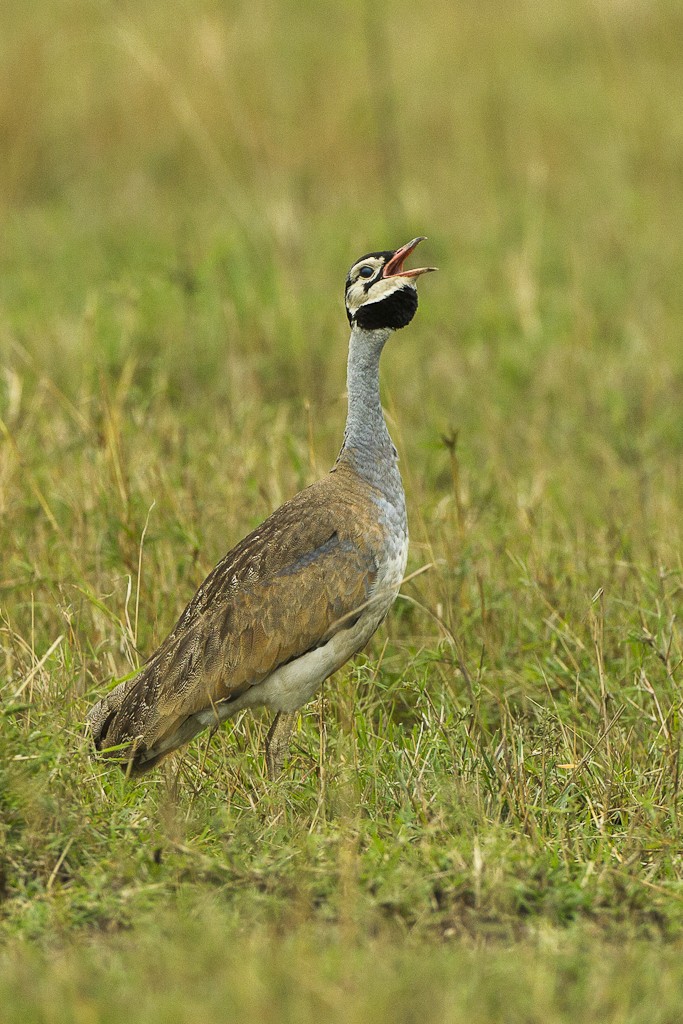White-bellied Bustard
A species of Eupodotis Scientific name : Eupodotis senegalensis Genus : Eupodotis
White-bellied Bustard, A species of Eupodotis
Botanical name: Eupodotis senegalensis
Genus: Eupodotis
Content
Description General Info
 Photo By Francesco Veronesi , used under CC-BY-SA-2.0 /Cropped and compressed from original
Photo By Francesco Veronesi , used under CC-BY-SA-2.0 /Cropped and compressed from original Description
It is rather small for a bustard, 48 to 61 centimetres (19 to 24 in) long. All are tawny brown above and on the breast and white on the belly, with cream-coloured legs; juveniles have light brown necks and heads, and adults have blue-grey necks. The adult female has a grey crown, a brown and buff line below the eye, and black speckling on the throat. The adult male has a black crown, black lines on the white cheeks, a black throat patch, and a pinkish-red bill. The call, often given in the early morning and late evening, has been described as "a very loud, guttural k'whuka WHUKa, k'wuka WHUKa..., or k'warrak, k'warrak... This species is usually seen in pairs or family groups, as young stay with their parents much longer than those of other bustards in the region. 
Size
60 cm
Nest Placement
Ground
Habitat
White-bellied Bustard typically resides in open grasslands, ranging from lower to relatively tall vegetation, and savannas dotted with scattered trees or shrubs. It adapts to a variety of environments including bushed grasslands, cultivated areas, and river plains. The species is found in areas with both wet and dry climates, and it is known to frequent grasslands that are sometimes intermixed with agricultural crops. During certain times, such as the hotter parts of the day or the non-breeding season, white-bellied Bustard may utilize modified pastures, burnt ground, or retreat to woodland regions.
Dite type
Omnivorous
General Info
Feeding Habits
Bird food type
Species Status
Not globally threatened.